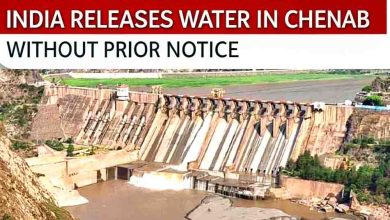Pakistan’s Water Crisis: 7 Urgent Solutions to Avoid a Thirsty Future
Pakistan Water Crisis is escalating rapidly due to mismanagement, overuse, and climate stress. Discover 7 urgent solutions to prevent a national catastrophe.
In the blistering heat of southern Punjab, a woman in a village near Bahawalpur treks two kilometres for a trickle of water. In Karachi, water tankers are mobbed daily. And in Rawalpindi, taps in middle-class homes often run dry for days.
These aren’t isolated incidents. They are signs of a deepening Pakistan Water Crisis — a looming disaster that threatens public health, food security, and national stability. Once blessed with mighty rivers and the world’s largest contiguous irrigation system, Pakistan now ranks among the most water-stressed nations globally.
2. Focus Keyword: Pakistan Water Crisis Explained
According to the Pakistan Council of Research in Water Resources (PCRWR), Pakistan’s per capita water availability has plummeted from 5,260 cubic metres in 1951 to under 1,000 cubic metres today — the threshold of absolute scarcity.
This critical shortage is caused not just by nature, but by chronic mismanagement, unchecked wastage, poor regulation, and a lack of national urgency.
3. Root Causes of the Water Crisis
Several factors contribute to Pakistan’s water crisis:
- Overdependence on Agriculture: Agriculture uses nearly 90% of freshwater, yet most farmers use wasteful flood irrigation.
- Population Growth: By 2030, Pakistan’s population is expected to exceed 274 million.
- Urban Expansion: Growing cities like Lahore and Karachi are depleting underground aquifers at unsustainable rates.
- Pollution: Over 70% of the Ravi River is now sewage and industrial waste.
- Outdated Infrastructure: Leaky pipes, inefficient dams, and corrupt projects have failed to meet rising demand.
4. The Human Cost of Inaction
The Pakistan Water Crisis is more than statistics — it’s a matter of life and death.
- 30 million people lack access to safe drinking water.
- 250,000 children die each year from waterborne diseases like diarrhoea and cholera (UNICEF).
- 93% of drinking water in Pakistan comes from overdrawn and polluted groundwater sources.
This situation also risks economic collapse, agricultural loss, and interprovincial conflict, particularly between Punjab and Sindh.
5. 7 Urgent Solutions to Avert a Water Disaster
1. Reform Agricultural Irrigation
Modern methods like drip and sprinkler irrigation can reduce water use by 60%. Currently, fewer than 5% of Pakistani farmers use these techniques. Government subsidies and public awareness campaigns are essential to expand their use.
2. Enforce Groundwater Regulation
Illegal borewells and unregulated tube-wells are draining the nation’s aquifers. Strict laws, permits, and real-time monitoring systems must be implemented, especially in high-use urban and farming zones.
3. Promote Rainwater Harvesting
Pakistan receives heavy monsoons, but most of the rainwater goes to waste. Rooftop harvesting systems, like those in Tharparkar’s Tanka system, should be scaled across cities and villages alike.
4. Revive Traditional Water Conservation
Communities once managed water sustainably. Restoring kunds, ponds, and underground tanks can boost water storage and reduce dependency on external supplies.
5. Upgrade Urban Infrastructure
Leaky water pipes, broken pumps, and inefficient tankers waste millions of litres daily. Investing in smart water grids, pressure sensors, and public accountability dashboards can fix the leaks.
6. Launch a National Public Awareness Campaign
The public must be educated to adopt small but impactful habits:
- Turn off taps when brushing
- Install low-flow showerheads
- Fix household leaks promptly
A single leaky faucet can waste 5,000+ litres annually.
7. Hold Industries and Governments Accountable
Industries that dump toxins in rivers must face heavy penalties. Dams and water schemes delayed due to corruption must be audited. Civil society, media, and citizens must demand transparency and raise alarm when abuse occurs.
6. International Models Pakistan Can Learn From
Countries with fewer water resources have succeeded where Pakistan is failing:
- Singapore recycles 40% of its wastewater through advanced treatment.
- Israel leads the world in drip irrigation and desalination.
- Cape Town, South Africa avoided “Day Zero” through water rationing and public cooperation.
Pakistan can replicate these successes — but only through urgent, coordinated action.
7. Conclusion: A Call for National Awakening
The Pakistan Water Crisis is not a distant threat. It is a clear and present danger. Crop failures, food shortages, health emergencies, and civil unrest await if bold measures are not taken today.
This is not just a government problem. It is our collective crisis. From policymakers to farmers, from city dwellers to factory owners — every Pakistani must change how they think about water.
The time to act is now. Because every drop wasted is a drop closer to disaster.







